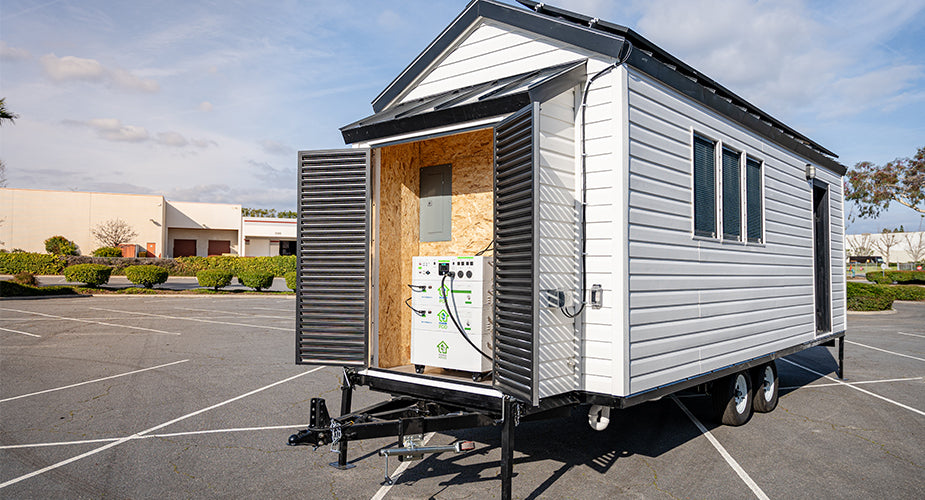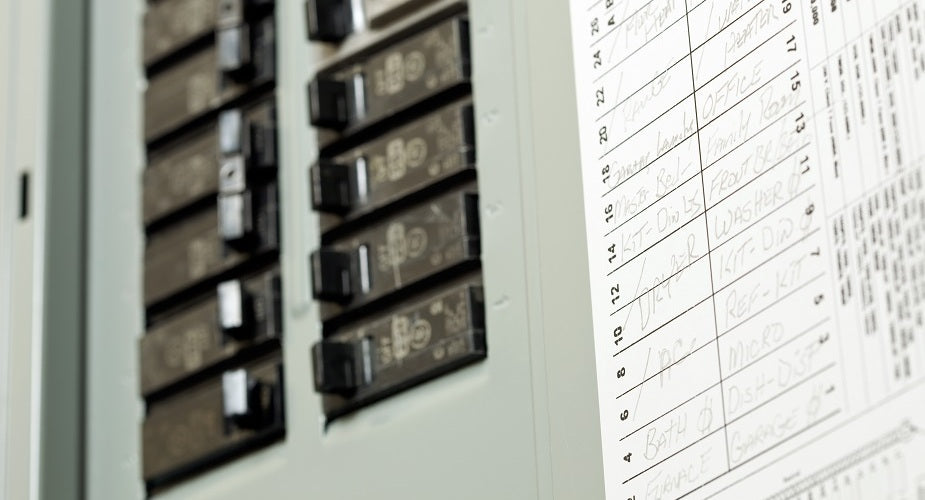Short circuits and ground faults are among the most common electrical issues encountered in residential, commercial, and industrial electrical systems. These problems can occur due to various factors, such as damaged wiring, faulty components, moisture intrusion, and improper installations. Both can pose serious safety hazards as they are closely related; however, they are different. Proper detection and prevention can prevent these dangers. So, in this article, we’ll take a closer look at the difference between a short circuit vs a ground fault and how they can be appropriately managed.
Short Circuit vs. Ground Fault: What are they, and how can you tell them apart?
What is a short circuit?
A short circuit occurs when there is an unintended direct connection between two points in an electrical circuit (a hot wire that carries live current touches a neutral wire). This causes the current to take a shortcut in the circuit and bypass the usual path that it’s supposed to follow. This shortcut allows electricity to flow very quickly through a path of low resistance, causing a large amount of current that can result in dangers such as overheating, sparks, or even an electric fire.
There are various reasons why short circuits can occur, including:
- Faulty wiring - Damaged or worn-out wiring can lead to a direct connection between conductors and can cause a short circuit.
- Defective components - Faulty switches, outlets, or circuit breakers can create a path of low resistance that leads to a short circuit.
- Improper installations - Incorrectly installed electrical systems increased the risk of short circuits.
- External factors - Other factors such as water intrusions, debris, or pests can cause damage to electrical systems and result in short circuits.
What is a ground fault?
A ground fault, also called an earth fault, happens when there is an unintended connection between a hot wire and the ground. The connection creates a low-resistance path to the ground that results in current flowing to the earth rather than through the intended circuit.
Ground faults can be caused by:
- Damaged insulation - Damage in the insulation on wiring can expose the conductor (e.g. a hot wire), creating a path for the current to flow to the ground.
- Moisture - Moisture caused by water leaks or condensation can create a conductive path between the conductor and the ground.
- Faulty appliances - Appliances that have damaged cords or internal wiring can create a ground fault when the energized parts come in contact with grounded parts.
- Improper grounding - Electrical systems that are incorrectly grounded can increase the risk of ground faults.
What is the difference between a short circuit and a short to ground?
Although both short circuits and ground faults involve unintended electrical connections, there are key differences between the two:
- Current path - In a short circuit, the current flows directly between two conductors and bypasses the intended circuit. In a ground fault, on the other hand, the current flows from a conductor into the ground.
- Resistance - Short circuits usually involve a very low resistance path, which allows a large amount of current to flow quickly. While a low resistance path is also involved with ground faults, the current, however, is directed to the earth.
- Safety hazards - Both a short circuit and ground pose serious safety hazards, like fire, electrical shock and damage to electrical systems. However, ground faults can be especially hazardous in damp areas where water or moisture increases conductivity.
|
Short Circuit |
Ground Fault |
|
Occurs when there is an unintended direct connection between two points (e.g. hot wire and neutral wire) in an electrical circuit |
Occurs when there is an unintended connection between a hot wire and the ground |
|
Causes: faulty wiring, defective electrical components, improper installations, external factors |
Causes: damaged insulation, moisture, faulty appliances, improper grounding |
|
Current flows directly between conductors, bypassing the intended circuit |
Current flows from a conductor into the ground |
|
Can cause overheating, sparks, or electric fire |
Especially hazardous in damp areas where water/moisture increases conductivity |
How can you differentiate a short circuit vs a ground fault?
Understanding how you can detect whether the issue is a short circuit or a ground fault is essential for maintaining the safety and efficiency of your electrical system. By learning to recognize the signs and which safety devices are in place to address each issue, you can respond appropriately and keep your home safe.
What are the indications of a short circuit?
One obvious symptom of a short circuit is a tripped breaker or blown fuse. These devices are designed to interrupt the flow of electricity when they detect an excessive flow of current in the circuit.
Other indicators of a short circuit are flickering lights, sparks, or burnt marks on electrical outlets or appliances. You may also hear popping or crackling sounds from outlets or devices. A short circuit can also cause a burning smell or a “burnt plastic” odor. You can also feel heat coming from outlets or devices.
You can use a device called a multimeter to measure the continuity or resistance between conductors to identify short circuits.
What are the symptoms of a ground fault?
If you suspect a ground fault, you should keep an eye out for Ground Fault Circuit Interrupters (GCFI) that have tripped. These safety devices are designed to detect small imbalances in the current and will shut off power to prevent electrical shock. Some signs of a ground fault are similar to a short circuit, such as flickering lights and “hot electrical” smells; however, you should also pay attention to any water or moisture around outlets, especially in areas where there is a water source like bathrooms or kitchens.
With ground faults, a GCFI tester can help determine if an outlet is functioning correctly and detect ground faults.
|
Short Circuit |
Ground Fault |
|
Look for tripped breakers or blown fuses |
Look for tripped GCFI |
|
Watch out for flickering lights, burnt marks on outlets or appliances, and burnt plastic odor; listen to popping or crackling sounds |
Watch out for similar signs as the short circuit, but also pay attention to any water or moisture around the outlets |
|
A multimeter can be sued to measure continuity or resistance between conductors and identify potential short circuits |
Use GCFI testers to detect ground faults |
By paying attention to these signs and using appropriate testing equipment, you can differentiate between a short circuit and a ground fault and take the necessary steps to address the issue.
Understanding Short Circuits vs. Ground Faults and Your Solar Generator
As more people turn to solar generators as an alternative power source, understanding electrical safety becomes increasingly important. While solar home systems, like Nature’s Generator, offer a sustainable, efficient, and cost-efficient way to produce energy, it is also vital for homeowners to have some electrical knowledge, especially about problems that may pose a danger in their homes.
A couple of reasons why knowledge of these issues is important in connection to installing and maintaining a solar generator include:
-
Safety concerns - Solar generators have various electrical components like inverters, batteries, and solar panels. Short circuits and ground faults can put your household in significant safety hazards and can also cause damage to your solar generator and other connected devices. System performance - Short circuits and ground faults can disrupt your solar generator's normal operation, leading to inefficient power production or even system failure. Identifying and properly addressing these issues promptly helps maintain your generator’s optimal performance.
- Electric code and standards compliance - Many local codes and standards require specific measures for solar generators, including protection against short circuits and ground faults. Familiarity with these issues helps ensure compliance with these regulations.
- Cost savings - Preventing and addressing electrical issues at the onset can help avoid costly repairs or replacements of damaged components. Early detection also helps ensure that your solar generator operates efficiently, maximizing energy savings.
- Peace of mind - Knowing how to detect and prevent short circuits and ground faults provides peace of mind that your solar power is operating safely and is at its optimum.
Conclusion
Short circuits and ground faults are two common electrical issues that can pose serious safety hazards to your household. Understanding the key differences between them, as well as how to detect and prevent these issues, can ensure the safe and efficient operation of your electrical systems. Proper maintenance, regular inspections, and the use of safety devices such as circuit breakers, fuses, and GFCIs are some essential things that can help protect your home against these hazards and promote electrical safety.
* We want to give credit where credit is due. Professional writer, Ishna Sablaya, contributed research and content to this blog titled: Short Circuit vs Ground Fault Thank you, Ishna, for your contributions!





